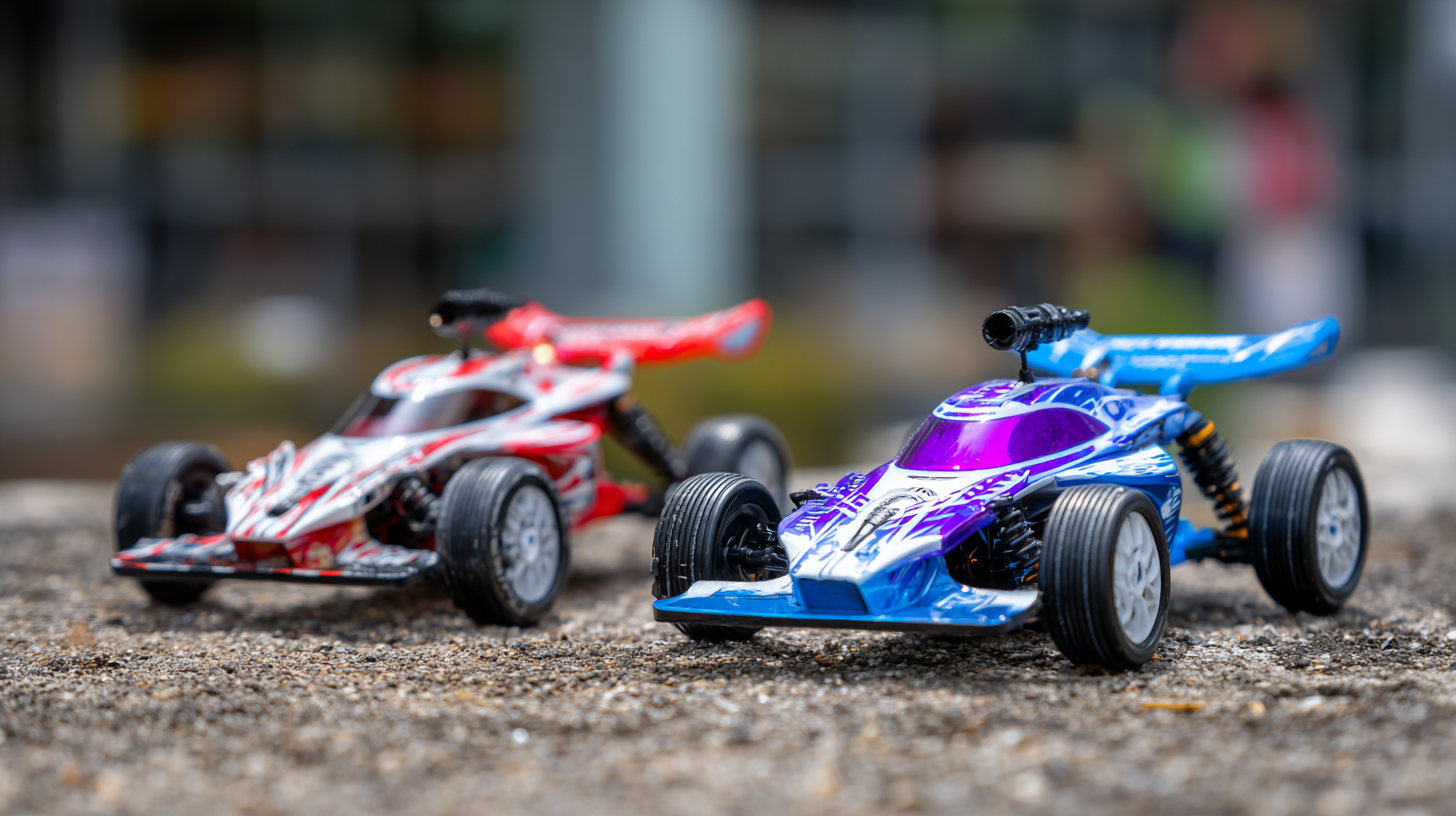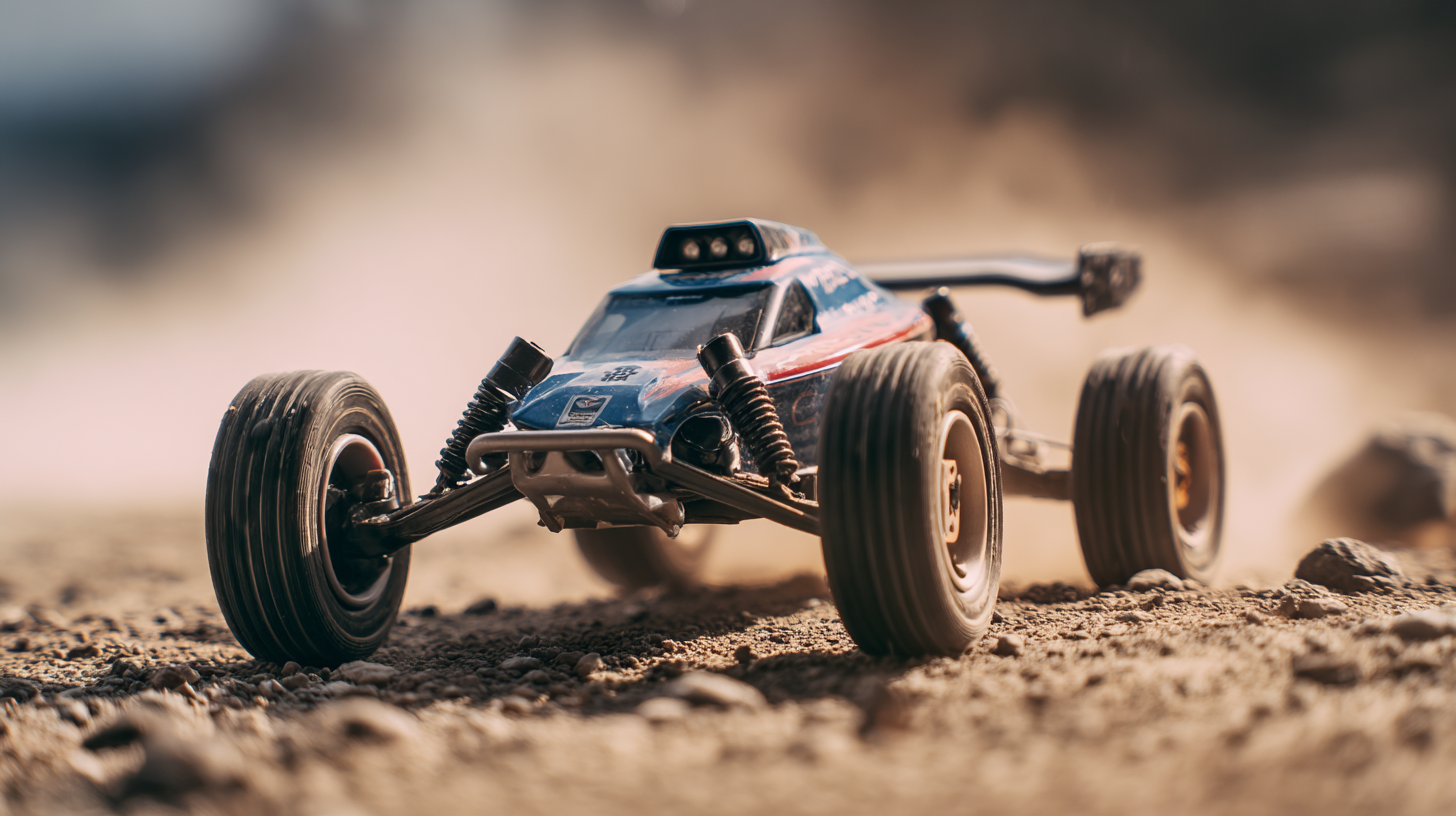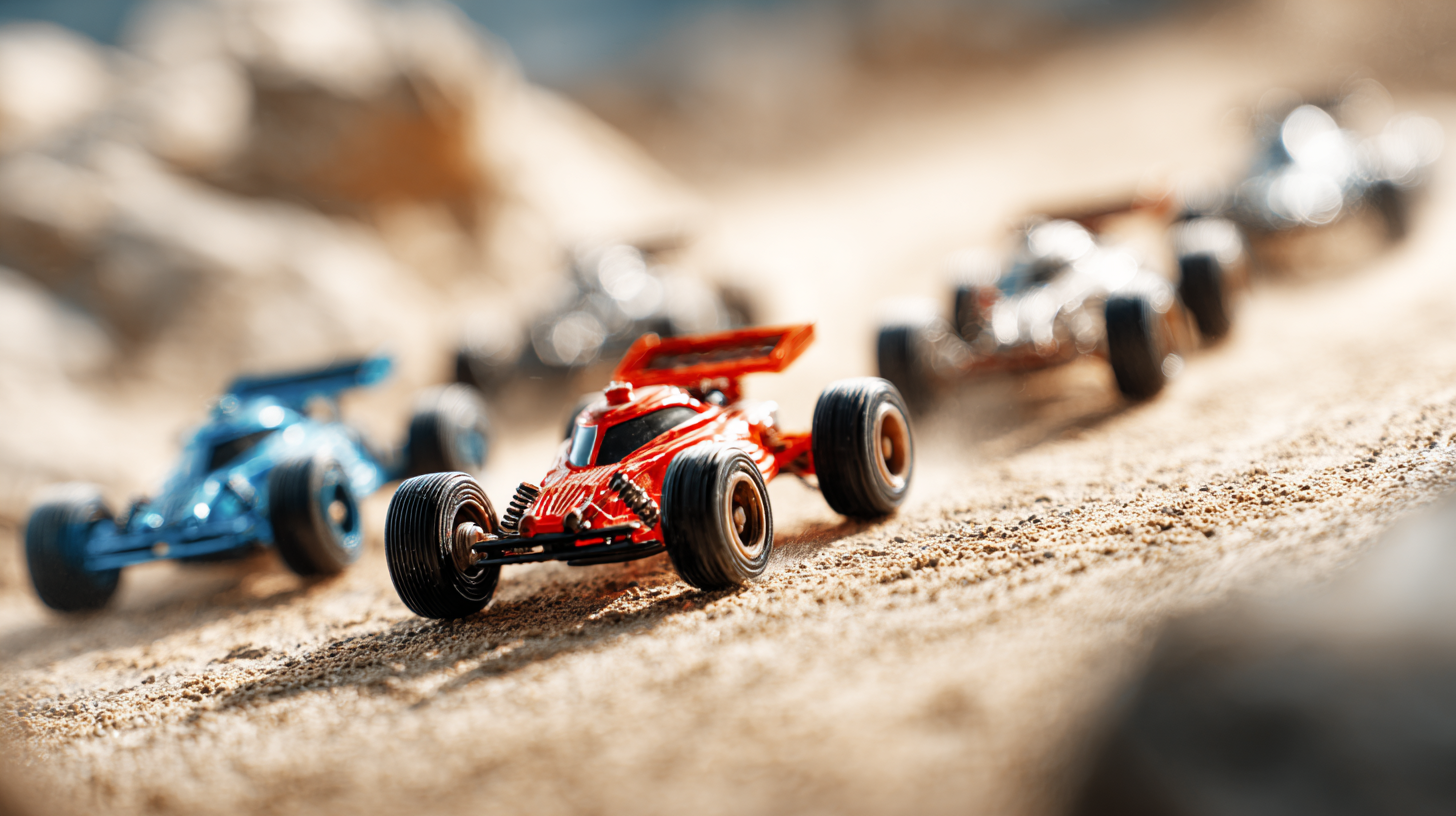As the world of hobbies evolves, few sectors have seen as dramatic an increase in popularity as the RC race cars industry. Once a niche market primarily driven by enthusiasts, RC race cars have surged into the mainstream, captivating a broader audience with their advanced technology, competitive formats, and vibrant community. Experts, such as renowned RC car designer and racer Mike Johnson, emphasize the thrilling nature of this sport, stating, "RC race cars are not just toys; they embody the spirit of competition and engineering innovation that attracts both young and old alike."

In this exploration of RC race cars, we delve into the factors contributing to their rising popularity, including advancements in battery technology, the proliferation of online racing leagues, and the growing availability of high-performance models. The evolution of this hobby reflects a blend of technological prowess and recreational enjoyment, which draws in both casual users and serious competitors. By examining current trends and specifications, we aim to provide a comprehensive understanding of how RC race cars have transformed from simple playthings into sophisticated racing machines that continue to captivate audiences worldwide.
The journey of RC race cars began in the early 1960s, primarily appealing to hobbyists who enjoyed building and modifying their vehicles for casual racing. These rudimentary models were often equipped with simple mechanical components and limited electric capabilities. However, the landscape began to shift significantly in the 1980s, when advancements in technology led to the development of nitro-powered engines and more sophisticated remote control systems. According to the International Toy Association, the RC car market witnessed a growth surge, with sales rising from $40 million in 1985 to over $200 million by 1995.
By the 21st century, the evolution of battery technology, specifically LiPo batteries, alongside improvements in electric motors, fueled a major leap in performance and accessibility. Models such as the Traxxas XO-1 showcased capabilities that could rival real-life racing cars, achieving speeds of over 100 mph. Reports from Market Research Future indicate that the global RC vehicle market, including race cars, is projected to expand at a CAGR of approximately 10% between 2021 and 2026, illustrating a shift from mere toys to serious competitive machines that attract both enthusiasts and professional racers alike.
The evolution of RC race cars has been significantly influenced by a series of technological innovations that have dramatically enhanced performance. Key advancements in battery technology, particularly the transition to lithium polymer (LiPo) batteries, have not only reduced weight but also improved power-to-weight ratios, allowing for faster acceleration and longer run times. According to a recent report by the International Remote Control Auto Racing Association (IRCARA), the use of LiPo batteries has led to a performance increase of up to 30% in competitive RC racing, enabling cars to reach speeds of over 60 mph.
Another critical innovation is the incorporation of brushless motors, which provide greater efficiency and reduced heat generation compared to traditional brushed motors. This enhancement has been a game-changer, as brushless technology allows for longer races without performance drop-off. A study published in the Journal of Remote Control Engineering highlighted that models equipped with brushless motors exhibit 50% more torque, translating into quicker lap times on demanding tracks.
Tips: When upgrading your RC race car, consider investing in a high-quality LiPo battery and brushless motor combo. Always check the compatibility with your model, and ensure your electronic speed controller can handle the new components for optimized performance. Don't forget to regularly maintain your car to keep it in peak racing condition.

The rise of 1:10 scale models has significantly influenced the popularity of RC race cars, catering to both amateurs and enthusiasts alike. This particular scale strikes a balance between size and performance, making it manageable for casual users while still offering enough complexity to attract serious racers. The affordability and availability of 1:10 models have also democratized the hobby, allowing a wider audience to participate in RC racing events, from local tracks to competitive leagues.
Moreover, advancements in technology have enhanced the performance of 1:10 scale RC race cars. Improved battery life, brushless motors, and customizable parts have elevated the racing experience, attracting a new generation of hobbyists. Online communities and forums have further fueled interest, as enthusiasts share tips, tricks, and modifications. As a result, the 1:10 scale model has become a staple in the RC racing scene, driving a surge in popularity that continues to evolve and expand.
The evolution of RC race cars reflects a remarkable blend of aesthetic appeal and functional enhancements. Current trends show that manufacturers are increasingly focusing on the visual aspects of their products, integrating vibrant colors, sleek designs, and LED lighting systems to attract both enthusiasts and casual users. According to a recent market analysis, aesthetic upgrades have led to a remarkable increase in consumer interest, driving sales by nearly 15% over the past year. These visual enhancements not only make the cars more enticing but also align with the modern consumer's desire for personalization and standout designs.
Functionally, the designs of RC race cars continue to advance at a fast pace, with an emphasis on performance specifications such as speed, durability, and control mechanisms. The latest models are equipped with advanced telemetry systems that provide real-time data on speed, battery life, and motor temperature, allowing users to make informed adjustments during races. Additionally, improvements in tire technology have enhanced traction and stability, making these vehicles more competitive than ever. Together, these trends in aesthetics and functionality are reshaping the landscape of RC racing, catering to both hardcore racers and newcomers alike, ultimately contributing to the surge in popularity of this captivating hobby.

The demographics of the RC racing community reveal a diverse and passionate group of enthusiasts. Traditionally dominated by younger males, the community is witnessing a significant shift with increasing participation from
women and
older adults. This expanding demographic has been driven by the accessibility of RC racing technology and the rise of online platforms that foster engagement, making it easier for newcomers to join the fun.
Social media groups and forums are creating
inclusive environments where individuals of all backgrounds can share their experiences, tips, and enthusiasm for the hobby.
Furthermore, the popularity of RC race cars is seeing a demographic surge among families seeking engaging outdoor activities. Parents are recognizing the value of this hobby in
building relationships with their children while encouraging
teamwork and
problem-solving skills. Events and races are now attracting participants of varying ages, creating a
multigenerational atmosphere that enriches the overall experience. These trends indicate that the future of RC racing is not only in the hands of traditional enthusiasts but also in a new wave of participants drawn by community, competition, and the joy of racing.






